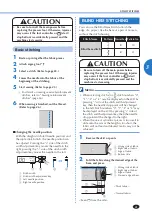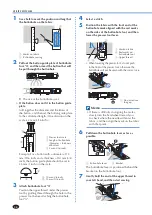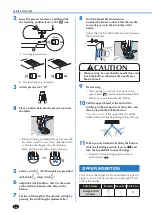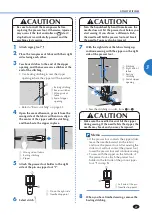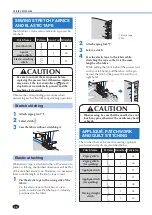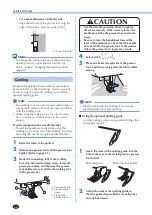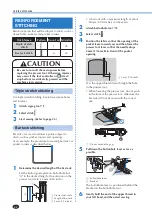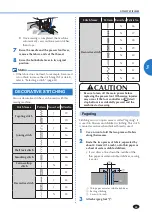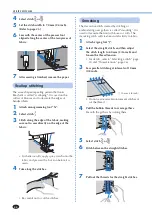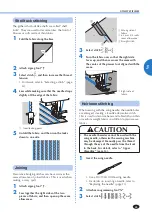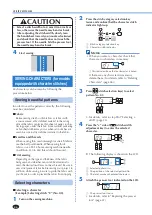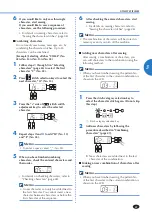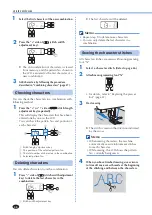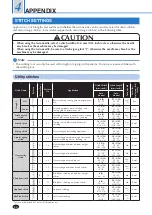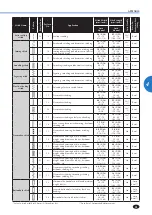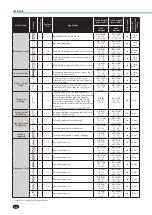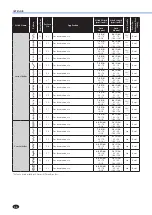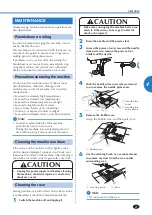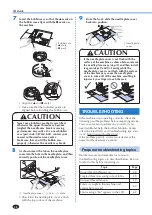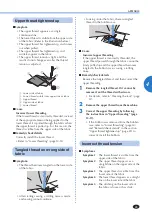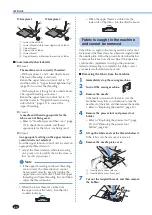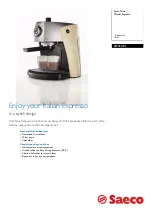
UTILITY STITCHES
45
3
Shell tuck stitching
The gathers that look like shells are called “shell
tucks”. They are used to decorate trims, the front of
blouses or cuffs made of thin fabrics.
1
Fold the fabric along the bias.
2
Attach zigzag foot “J”.
3
Select stitch , and then increase the thread
tension.
• For details, refer to “Selecting a stitch” (page
24).
4
Sew while making sure that the needle drops
slightly off the edge of the fabric.
1
1
Needle drop point
5
Unfold the fabric, and then iron the tucks
down to one side.
Joining
Decorative bridging stitches can be sewn over the
seam allowance of joined fabrics. This is used when
making a crazy quilt.
1
Attach zigzag foot “J”.
2
Sew together the right sides of the two
pieces of fabric, and then open up the seam
allowances.
1
1
2
3
1
Wrong side of
fabric
2
6.5 mm (1/4 inch)
seam allowance
3
Straight stitch
3
Select stitch , or .
4
Turn the fabric over so that the right side
faces up, and then sew over the seam with
the center of the presser foot aligned with the
seam.
1
Right side of
fabric
Heirloom stitching
When sewing with the wing needle, the needle holes
are enlarged, creating a lace-like decorative stitch.
This is used to decorate hems and tablecloths on thin
or medium weight fabrics in addition to plain weave
fabrics.
CAUTION
• The needle threader cannot be used with the
wing needle, otherwise the sewing machine
may be damaged. Manually pass the thread
through the eye of the needle from the front
to the back. For details, refer to “Upper
threading” (page 15).
1
Insert the wing needle.
• Use a 130/705H 100/16 wing needle.
• For details on inserting a needle, refer to
“Replacing the needle” (page 20).
2
Attach monogramming foot “N”.
3
Select stitch , , , , , , or .
Summary of Contents for 885-E33
Page 2: ......

